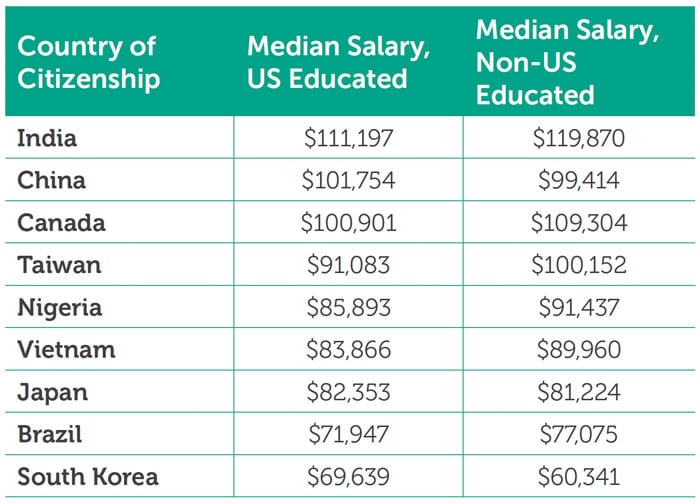Career motivations are consistently revealed in major global research studies to be a primary driver of the choices students make about study abroad, from where in the world to study to which institution to which programme. Prospective students search out available information and speak with other students (current students and alumni) to determine where and what to study, but sometimes they are frustrated by the scarcity of data with which to base their decisions.
A new report from Intead and job search platform F1 Hire, “Connecting Dots: How International Students Are Finding US Jobs,” explores this very issue as it relates to career outcomes in the US. The introduction of the report notes the broad parameters of the research:
“We set out to evaluate international students’ post-education career opportunities and outcomes in the US. We also wanted to learn more about how international students are seeking and finding US jobs. So, the Intead team partnered with our friends at F1 Hire to examine the career opportunities and outcomes using both public and proprietary datasets.”
STEM for the win
Not surprisingly, the research found that international students prefer STEM programmes because of the link to three-year Optional Practical Training. The reason the US government provides the three-year opportunity is because there are such skills shortages in tech-oriented industries. The vast majority of companies sponsoring international students for US jobs (9 in 10) in 2023 were in technology.
International degrees in demand
More surprisingly, the research revealed that: “International students earning a degree outside of the US can make a higher starting salary in the US than those graduating with a US degree and seeking a US job.” This finding suggests there is a long way to go in terms of US institutions being able to offer a key graduate outcome – better salary – that international students are looking for.

The true value of a US degree for international students, as revealed by the research, is that US employers tend to look for fewer years of prior work experience, lowering the entry bar for students with limited work experience.
Intead makes the following important recommendation, for which we’ll provide some explanatory notes: The H-1B is the work visa that allows US employers to hire foreign workers with specialised skills, especially in technology, finance, engineering); F1 Hire is a platform launched in March 2023 dedicated to helping international students and workers to find jobs in the US; and PERM – which stands for Permanent Labor Certification Program – is used by US employers to sponsor an employee for permanent residence in the United States. Intead says:
“Universities investing in robust career service offices and developing strong relationships with corporate partners will win. Does your institution make an effort to partner with H-1B- and PERM- friendly employers in California, New York, and Texas? How about local employers with a propensity to sponsor H-1B applications? One of the advantages of the F1 Hire data is the ability to identify international talent-friendly employers. Universities can partner with F1 Hire to build their employer network.”
Opportunities abound outside of the most popular regions
The research also found that certain states outside of California, New York, and Texas are notable for boasting the “highest ratio of H-1B jobs per international student attending universities there.” Those states include New Mexico, Nevada, Colorado, Tennessee, and Montana. Intead also found that North Carolina, Michigan, and Virginia also have a “high proportion of international student-friendly employers.” This represents a competitive advantage for institutions in those regions when recruiting international students – one that they might not have been aware of without the Intead data analysis.
Report highlights need for better data on graduate outcomes
Intead notes a serious problem facing US institutions (but the point could be extrapolated to institutions in many destinations: “Institutions seem to have the hardest time making the case [that earning a degree with them boosts career prospects] to their prospective students—or some of the schools simply don’t have the student data on the whole job search process.”
They advise:
- Making a long-term investment in career services, and cite Northeastern and Drexel as examples of institutions “with strong and well known co-op programs that produce both career experience and careers.”
- Taking advantage of “readily available content from your recent and relatable graduates demonstrating that they are on the career path they so wanted (testimonial social media posts, video, etc.).”
The following graphic represents other top-level advice in the Intead report:

For additional background, please see:
Study maps employment pathways for international graduates in US; calls for expanded career services – ICEF Monitor:
Career motivations are consistently revealed in major global research studies to be a primary drive…
